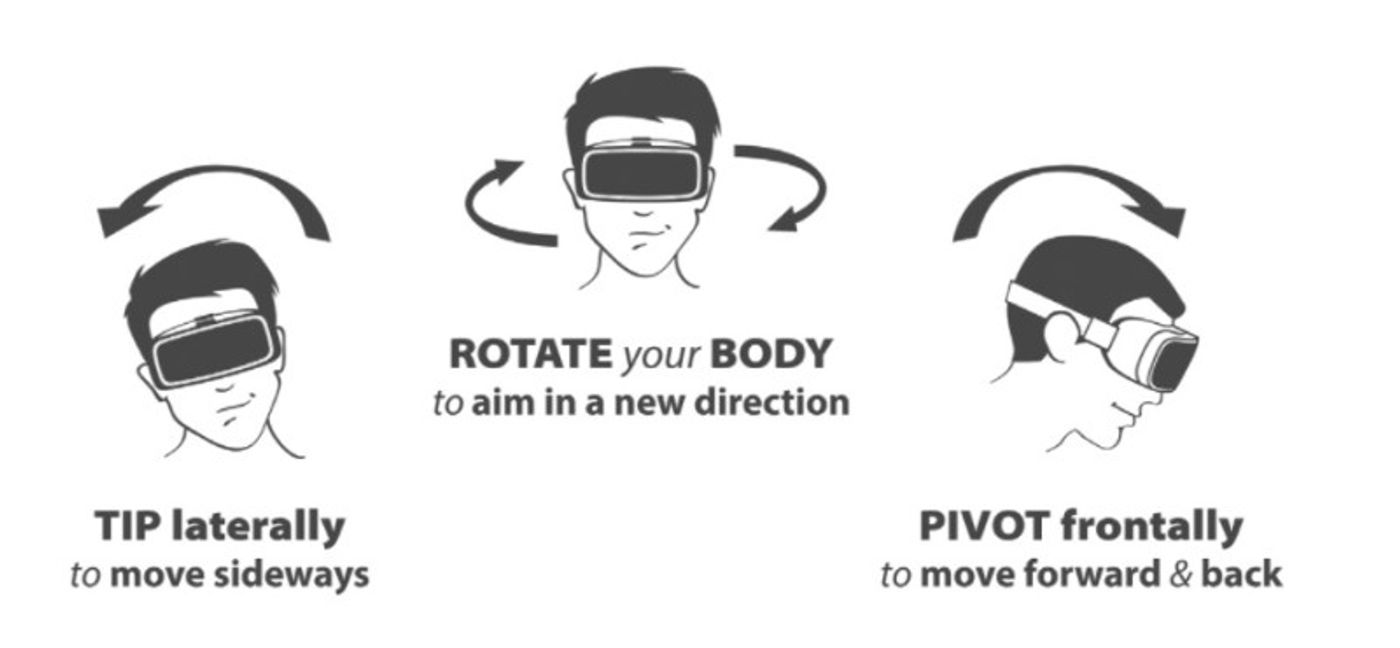Now You Can Navigate VR With Your Body, Avoid Motion Sickness
Motion sickness is a natural side effect of virtual reality (VR) experiences for many people. This occurs because while our visual senses see movement, our inner ear or vestibular senses are experiencing relative stillness – our hands are often the only part of our bodies that are moving and interfacing with the simulation as they manipulate a controller. This causes confusion and nausea in the body. Research and Development lab MONKEYmedia has created a new way to navigate in VR, augmented reality (AR) and remote drone piloting experiences called “BodyNav.” BodyNav allows a person to control movement in VR by moving their head and torso, which creates alignment in their sensory experiences and also frees up their hands for other in-game functions.
Having to control both avatar movement and other actions – such as shooting in a battle scenario – with a hand controller has made VR both difficult and uncomfortable for many. “If you change your view and movement with your hands and still have to pull a trigger that represents a lot of cognitive load,” Austin-based MONKEYmedia Founder and CEO Eric Bear said in a February 2018 interview with GamesBeat, the gaming division of VentureBeat. He believes that game designers are responsible for creating user-focused experiences and that BodyNav can significantly reduce VR-related motion sickness. “Now, you can sneak around corners and move fast by leaning. If it’s too complex for you to learn a controller, that’s not your failure. It’s a failure of the game designer for creating too heavy a cognitive load,” he stated.
Bear explained that VR headsets already hold sensors which can allow for the person’s torso and head movements to control navigation. This facilitates a more cohesive and realistic experience. The sensors include gyroscopes, which can detect orientation, angle and speed; and accelerometers, which measure acceleration forces. Oculus Rift’s “Dead & Buried” game already uses these to detect some movements during shootouts.
Bear compares the experience of using BodyNav to riding a Segway, a one-person scooter-like vehicle that uses tilt- and 
Using BodyNav is “a bit like when you’re in zero gravity. By just slightly ever moving your head, you feel super powerful. It’s truly amazing. Makes you a super hero," said Laetitia Garriott de Cayeux, co-Founder of Global Space Ventures, a venture captal firm focused on the private space industry, according to MONKEYmedia's Facebook page.
MONKEYmedia’s team has seven patents and more pending for the BodyNav invention. According to Bear, the new body-centric system can be licensed to game developers. An applications programming interface will allow the system to be integrated into diverse VR and AR apps and games. Because motion sickness is an issue for remote drone pilots too, this development also has applications in this area. MONKEYmedia’s related patents secure a range of inventions: BodyNav, Walk-in Theater, which allows viewers to have heightened, interactive video experiences; and Teleport, which focuses on drone piloting.
Bear has been working on VR with his wife Janna since the 90s and they hold more than 100 tech patents. The MONKEYmedia site states licensees of their patents include “the largest consumer electronics and operating system companies in the world, all major motion picture studios in the United States, and other Fortune 500 industry players.”
Feb. 6, Bear shared on Twitter that, “A limited-time promotional bundle of three #BodyNav apps is available for 99¢ in the App Store.”









